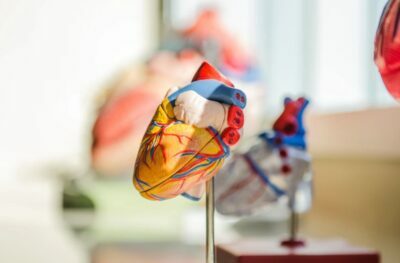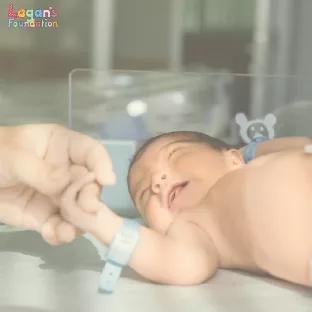
Congenital Heart Defects
What are they, why do they occur and how are they treated?
Congenital heart defects are the most common birth defect in newborn babies today, yet there is little understanding of what they are and how they affect children. In this piece we are going to be diving into what they are, how they are diagnosed, what the symptoms are and how to get help with respite care and services.
What are congenital heart defects?
Congenital heart defects are structural defects affecting the walls and valves of the heart, including the arteries and veins surrounding it. These defects disrupt normal blood flow through the heart, which can cause the heart to slow down, blood to go in the wrong direction or to the wrong place, or be blocked completely. Congenital heart defects cannot be cured.
Why do congenital heart defects occur?
Scientists aren’t yet able to determine why they occur – they are not necessarily hereditary and occur at random. These defects occur in the womb due to complications when cells are dividing and the baby is growing. They are born complications rather than something that can be developed at a later age.
Are congenital heart defects inherited?
Again, there is no simple answer to this as it completely depends from case to case. Adults with these defects can go on to have perfectly healthy babies, and perfectly healthy adults can have children with these defects. Naturally, however, adults with these defects that are expecting will be monitored more during pregnancy, which is when the majority of cases are spotted.
Are congenital heart defects detected before birth?
Yes, most cases are detected before birth, typically around the 20 week scan. It is the number one birth defect, affecting 1 in every 100 babies born in the UK; around 12-15 babies are born with it every day.
As technology has developed over the years, it is now increasingly easy to detect, meaning that a smaller number of cases go undiagnosed – more on this below.
How are congenital heart defects diagnosed?
As mentioned earlier, most cases are diagnosed at the 20 week scan, both minor and major complications. A small percentage slip through the net but are noticed relatively quickly, such as if a baby has a slight blue colour when they are born or during newborn checks.
In rare cases, it can be years before defects are actually detected, which is why unfortunately you sometimes hear of cases where a child may have collapsed out of nowhere during a football game when the defects have suddenly kicked in.
Can they be detected on an ultrasound?
Yes, as mentioned above, congenital defects are typically detected during a 20 week ultrasound scan. This is how most cases are diagnosed today.
What are the symptoms of congenital heart defects?
Babies and children may experience some or all of the below symptoms:
- Lips or nails slightly bluer in colour: this is due to the heart not pumping oxygen around the body as well as it should be, so the extremities are the first thing the body shuts off to protect the organs
- Abnormal breathing: you may hear a noise that doesn’t sound right when the child breathes, they may get out of breath easily and may struggle to take to their bottle due to breathlessness. In some extreme cases, babies may also breathe a certain way that looks like they are sucking in their whole rib cage
- Poor weight gain: if babies are struggling to hit their monthly weight targets, this can be as a result of heart complications
Are congenital heart defects curable?
Unfortunately, they can never be cured – it is something a person will always have in the background to keep watch of and review. They are, however, much more manageable now thanks to improvements in medicines, surgeries and heart transplants. Many children born with complex heart defects go on to lead full and happy lives.
The type of treatment a child requires will depend on a variety of factors, including:
- The type of defects
- Severity
- The child’s age
- Size of the child
- General health
Are congenital heart defects fatal?
Not always. Again, science and medicine is continuously advancing and therefore there are fewer children passing due to complications. We like to see defects as more life-limiting than fatal.
Whether or not defects will be fatal depends on their severity, in some cases only temporary repairs can be made and therefore a child’s life expectancy is sadly likely to be limited, whereas in other cases treatments can almost return a child’s heart to ‘normal’.
Are congenital heart defects rare?
No, congenital heart defects are actually surprisingly common – around 1% of babies are born with these defects every single day. There are many different heart defects with some more common than others. They also all differ in severity, with some causing little issues throughout their lives.
Can congenital heart defects be prevented?
No, they cannot be prevented as they naturally occur as cells divide in the womb. There is nothing that can be done to prevent this, as with other problems that are caused during development.
How many congenital heart defects are there?
There are at least 17 types of congenital heart defects recognised today, listed below:
- Aortic Valve Stenosis: When valves in the heart don’t work properly, they can leak blood. Pressure can build up and damage the heart.
- Patent Ductus Arteriosus: This is an unclosed hole in the aorta.
- Atrial Septal Defect: This is a hole in the wall between the top two chambers of the heart, causing issues with oxygen.
- Ebstein’s Anomaly: This is when a valve does not properly close, which means blood can flow in the wrong direction. This is very commonly seen with Atrial Septal Defects above.
- Coarctation of the Aorta: This is when the body’s main artery narrows, causing high blood pressure or heart damage.
- Complete Atrioventricular Canal Defect: This is a hole in the centre of the heart which affects all chambers. This leads to mixing of blood and issues with routes to different parts of the body.
- Truncus Arteriosus: This is when there is one large artery to carry blood to the lungs and body, rather than two.
- Dextro-Transposition of the Great Arteries: This is when the functions of the two main arteries exiting the heart are reversed. The arteries are connected to the wrong parts of the heart.
- I-transposition of the great arteries: Where the lower section of the heart is reversed.
- Pulmonary Valve Stenosis: this is when a heart valve is fused or thickened and therefore allows blood to flow out of the heart via the pulmonary artery.
- Tetralogy of Fallot: this defect consists of four issues – muscle surrounding the lower right chamber is too thick, there is an obstruction between the lungs and the heart, there is a hole between the lower chambers, which the aorta lies over.
- Total Anomalous Pulmonary Venous Connection: This occurs when there are issues in the veins that lead to the lungs.
- Ventricular Septal Defect: This is a hole in the wall between the two lower chambers.
- Single Ventricular Defects: These are the more rare disorders which affect one lower chamber.
- Hypoplastic Left Heart Syndrome: An undeveloped left side of the heart
- Tricuspid Atresia: This occurs when there is no tricuspid valve in the heart. A result, blood cannot flow from the body into the heart as normal.
- Pulmonary Atresia OR Intact Ventricular Septum: This is where the pulmonary valve does not exist. The only way that the body receives oxygenated blood is through blood diverted to the lungs via openings that should be closed usually – these stay open when this defect occurs in the womb.
Which congenital heart defects are fatal?
As mentioned, most congenital defects are only life limiting rather than fatal thanks to advances in medicine and treatments. Only the more serious conditions that are not treated as soon as possible can unfortunately be fatal.
Which congenital heart defects cause cyanosis?
Cyanosis is blue discoloration of the skin due to low oxygen levels. Cyanosis can be caused due to pulmonary hypertension, which is high blood pressure in the arteries that supply the lungs. These blood vessels constrict and their walls thicken so that they are unable to carry as much blood.
The heart defects that can cause cyanosis include: Tricuspid Atresia, Pulmonary Atresia/Intact Ventricular Septum, Aortic Valve Stenosis, Ebstein’s Anomaly, Coarctation of the Aorta, Hypoplastic Left Heart Syndrome, Tetralogy of Fallot, Total Anomalous Pulmonary Venous Connection, both Transposition of the Great Arteries defects and Truncus Arteriosus.
How is congenital heart disease diagnosed?
If congenital heart disease is not detected during pregnancy scans, but a newborn has symptoms, one or more of the following tests can be carried out to diagnose potential defects:
- Chest X-Ray: This can show whether there is an excessive amount of blood in the lungs or if the heart is bigger than it should be
- Electrocardiogram: This measures the heart’s electrical activity to assess how well it is beating
- Echocardiography: This shows any issues inside the heart. This can help to show heart problems that may have been missed during scans but can be picked up as the child develops
- Pulse oximetry: This test measures the amount of oxygen in the blood by placing a sensor on the ear, toes or fingers. The sensor sends out light waves to a computer, which measures how the light waves are absorbed. Oxygen affects how quickly they are absorbed, giving the computer an indicator how how much is present in the blood
- Cardiac catheterisation: This shows how much blood is being pumped through the heart. Under anaesthetic, a catheter is inserted into a blood vessel, typically an artery or vein in the neck, arm or groin. This is moved into the heart and allows pressure measurements to be taken.
How do Lagan’s Foundation help children with congenital heart defects?
At Lagan’s Foundation we are specialists in congenital heart defects and offer respite care and short breaks for parents and carers who look after children with these conditions. Constant feeding, medication and potential shortness of breath need to be attended to 24/7, and we are a charity that is here to help out exhausted carers.
Our support workers are specially trained to pick up symptoms, and can identify if the child is having an off day and can sometimes pick up on things parents can easily miss.
We have strong relationships with specialist centres such as Alder Hey Children’s Hospital in Liverpool, one of the world’s leading children’s hospitals. If we need to ask any further questions we have contacts in the form of cardiac nurses and surgeons that can help us and point us in the right direction.
To find out more about our services, get in touch today and see how we can help

![Understanding Total Anomalous Pulmonary Venous Return [TAPVR]](/wp-content/uploads/2025/04/Understanding-Total-Anomalous-Pulmonary-Venous-Return-FI-312x312-c-default.jpg)


